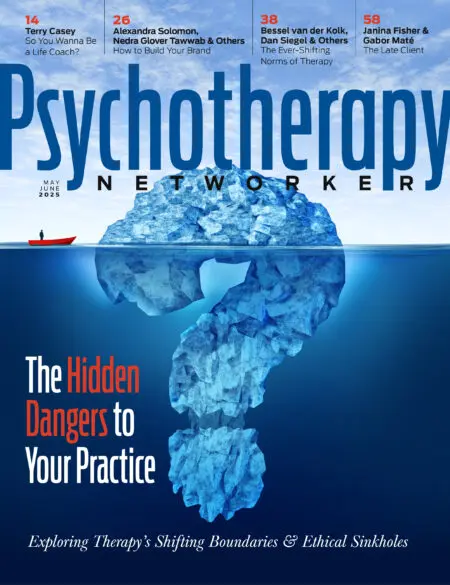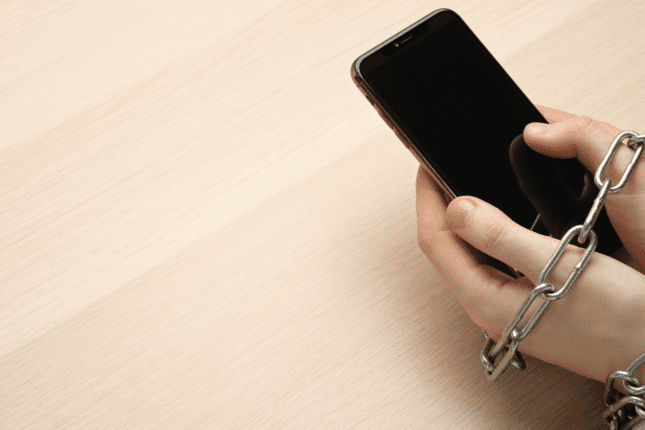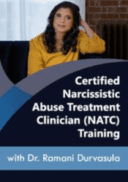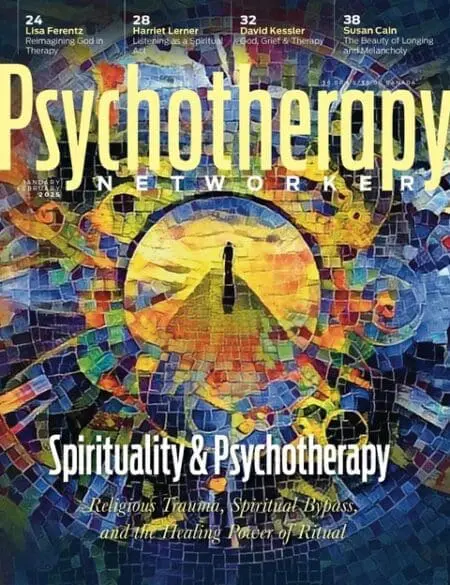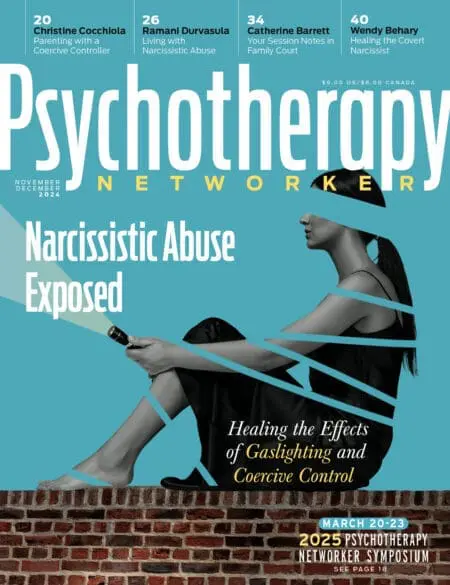Last summer, a few months after our anxious, older kiddo started taking a low dose of an antidepressant, we dropped him off at music camp. A Gen Zer, he’d been having a hard time. Physically his eyesight and posture were being damaged by having an always-on device in his face. His ability to maintain relationships IRL—in real life—was suffering. We’d long been aware of how screens can damage children’s mental health, but we were still naive. We thought the music camp would help. The audition process had been rigorous, and he was proud to be there. We were optimistic he’d lose interest in his phone and meet other kids there with similar musical interests. As we said our goodbyes, he gave us a big, warm hug.
“I’ll be fine,” he said, widening his eyes and shaking his head as if to say, “I’ve totally got this.” He walked into the main building, and we drove away. We had no idea that our memory of that warm hug would be the last time we felt close to our son for a very long time.
***
Two weeks later, when he returned home from camp, our son was more exhausted than when he’d left. At the recommendation of a dermatologist, we’d put him on Accutane and steroids for some stubborn acne, and the combination affected his mood, just as the warning labels warned that it might. When he told my wife he was having suicidal thoughts, we worked with his psychiatrist to cut out Accutane and Prednisone and increase his Prozac.
By the end of the summer, he was getting deeper into chatrooms, particularly on an application called Discord. We knew children and teens need protection from the internet, but our situation wasn’t a simple matter of banning screens. Our kiddo had found support and a sense of belonging in the LGBQT+ groups he’d joined online. Knowing how much he struggled to feel at ease in school, we’d decided—after several conversations with his pediatrician—that access to Discord for the LGBQT+ community support he found there was important for him.
Gradually, over the course of a few months, we noticed a slow deterioration in our interactions with our son. As with every teenager on the planet, he had a lot going on: challenges at school, issues with friends, concern about his appearance and identity, depressive symptoms, and an ADHD diagnosis, which had started us on what felt like a musical chairs game of medication trials. There were also a couple of panicked visits to the emergency room. As parents, we were exhausted.
By the time winter arrived, we’d settled into a “new normal.” Our one-time honors student got failing grades and lost his restaurant job which was one of the few “real world” interactions he had. Although it wasn’t clear how often he was on screens, we tried to manage it. Getting him to hand over his phone at night was a daily battle that sometimes included a flying phone.
Walking on Eggshells
Gradually, our older son became a stranger. We met with a family therapist to discuss boundaries, and the therapist seemed to see things entirely with our son’s perspective. “My parents are too intrusive,” he said. “They should have permission to enter my room.” We established new “guidelines”: he would manage his time after school and in the evening, we’d check-in with him on how he was doing and what he needed for the next day. We agreed to call his phone and ask permission to enter his room. If we needed to talk to him outside of these parameters, he could refuse. Looking back now, I realize the power in the house had turned upside down. As parents, we should be the authority, and we’d ceded that to a 15-year-old. This reversal had been so gradual we barely noticed it—maybe because we were too busy being terrified that our son would do something drastic that we couldn’t foresee or control.
And then our nightmare came true. The day before Thanksgiving, my wife texted me. “He’s run away.” Our son had sent her a message from the bus station that he was going to Sacramento to live with friends he’d met online. I didn’t think, I just drove the icy mountain highway a bus would take from Denver, I-70 West, desperately searching the highway and rest-stops for him. With the help of the police, we found our tired boy at a mountain town bus stop. I helped him into our small Jeep, and we drove home.
The next six months were a power-struggled blur. My wife and I took turns sleeping on the couch near the front door. We were constantly imagining worst case scenarios and hiding car keys, knives, and medications. Months of labile mood swings, medication changes, therapy visits, and rock-bottom grades followed. Meanwhile, our 12-year-old son had been learning to take care of himself and had mastered the art of invisibility to avoid conflict. Every day, every moment, we were walking on eggshells.
A Virtual Maginot Line
Internet and screen addiction is a relatively new phenomenon, and in most books about it, children are the focus. But parents are suffering too. The algorithms and technology addicting kids are incredibly advanced. My wife is a nurse, but I’m an IT veteran with 20 years managing hardware and software. Despite my background, the best I could do as a tired parent was try to confiscate my child’s devices at night.
A recent article from the American Psychological Association notes that: “A multipronged approach to social media management, including time limits, parental monitoring and supervision, and ongoing discussions about social media can help parents protect teens’ brain development.” At first glance, that sounds reasonable but in fact—as my and I and many other parents are learning—it’s laughable. The harsh reality is that curious kids have always been able to sidestep parental controls. They’re like a virtual Maginot line—the defensive fortification that failed to stop invaders marching into France in World War II—children can march right around the edges of these controls. Today, this is enabled by an army of roughly 1 billion kids probing the platforms and parental defenses to find holes, and they’re sharing their intel with others on the web. But don’t take my word for it. See for yourself! Take 5 minutes to google: breaking out of parent screen time settings, getting around Bark app, and what is a calculator vault. What you’ll find is advice like “download porn to the calculator vault and lock access with a private code key.”
Is it any surprise the Surgeon General called parental stress “a public health issue”? Parents, while responsible, are outnumbered and outstrategized by the children’s IT army and the coin operated companies that manage the platforms they want to access. It’s no surprise that the Pew Charitable Health organization has identified a youth mental health crisis in the US.
In early Spring, smelling an odor, my wife opened my son’s door and found a box of unopened syringes and needles next to rotting pizza. For us, this was the last straw. We changed our tack. The next morning, I hacked into my kid’s computer. I could see he’d been repeatedly groomed and abused online. As a victim, he’d been receiving money, using it to buy bitcoin, and purchasing illicit products on the dark web that his groomers recommended. He’d planned to self-medicate using IV drugs procured from the dark web, where everyone is of age, there are no protections, and anything you can imagine is available for bitcoin.
Over the next few hours, we spoke to our son calmly about what we’d discovered and our concerns for his wellbeing. He was upset and accused us of invading his privacy, but we held our boundaries. Finally, our kiddo asked that we take him to the inpatient suicide ward, which we did. While he was there, we organized transport to a Wilderness Program called Star Guides. Though we believed in its holistic approach, we were still scared of sending him there, mostly because we were making this choice against medical advice. Our team of doctors at Children’s Hospital in Denver not only disagreed with our decision, but they also warned our kiddo about what we were planning to do.
We did it anyway.
Over the next few months, with our son in the program, we recovered. My wife and I not only slept in the same bed for the first time in months, but we also slept through the night—a basic pleasure we no longer took for granted. Our younger child finally got the attention from us he’d been living without for too long. We collaborated with the wilderness program therapists and felt comforted by the continued evidence we saw that they were viewing our child as a whole person rather than as a collection of symptoms. After eight weeks, we visited him in Utah and he said, “I love you guys. Thank you.” My wife and I cried. The boy who’d hugged us before music camp nearly a year ago was back. “If it weren’t for this therapy,” he continued, “I think I would’ve wound up in jail or dead.
***
Like a host invaded by a new virus, it’s taken society time to grasp the risks of unfettered internet access for kids. We’re only now beginning to understand the costs, and to take small steps to create stronger defenses against dangers flowing into our homes via fiber optic cables. Our son was one of the lucky ones—we discovered what was happening in time and had the resources to get him the right help. Many kids aren’t so lucky. My son and I are working with the Department of Homeland Security and the Innocent Lives Foundation to apprehend the predators who targeted him. I’m hopeful more parents, teachers, legislators, and mental health professionals will join forces in the fight to create a world where kids are safe online.
Will Claxton
Will Claxton works as an IT professional at hardware and software companies and has, along with his wife, Tracy, and a good friend, Robert Kemp, created a company called Safe Sprouts to give parents an upper hand when it comes to understanding and monitoring their kids’ online activities.
